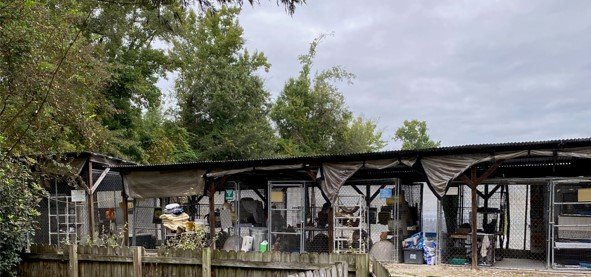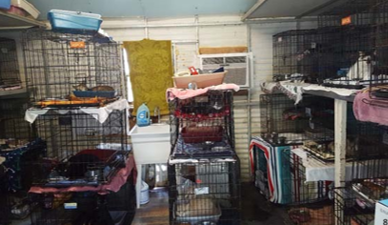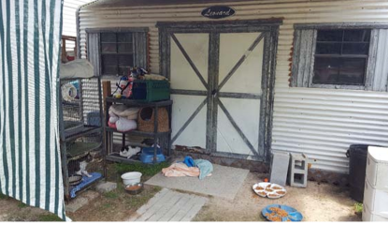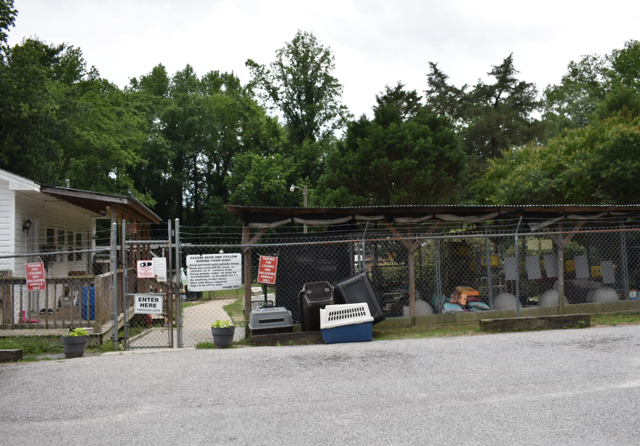A New Home for DCHS
Why We're Campaigning
Upon its founding in 1997, DCHS took over the grounds formerly known as the Darlington County Pound. There was no funding for a building, so volunteers worked to make the situation more comfortable and humane. In the twenty years since, they have added structures but have never been in an enclosed, contained building. Today it is best described as a series of unconnected mobile structures.
Located at 1701 Animal Control Boulevard in Darlington, the existing shelter is at a dead-end road off of Route 151. The entrance is marked by only two small signs, and access to the road is controlled by a gate because the conditions of the existing system of structures that form the facility is considered a safety hazard, and inappropriate for public access.
Proper cleaning and disinfecting of the animal housing is impossible. There is no means to control airborne infectious diseases. Each year, an average of 160 of the animals in the facility die before they can be adopted, transferred or even euthanized. The death rate is in direct correlation to the conditions of the animal housing. Furthermore, because much of the animal housing is outdoor and subjected to extreme heat, cold, hurricane-force winds, and other conditions, the staff and volunteers at DCHS spend hours on tasks like replenishing cold water in the summer or wrapping blankets and sweaters on animals in the winter; and thousands of dollars annually on tarps, heating lamps, fans, and other equipment simply to keep animals from freezing or overheating.
A New Home for DCHS
The new facility is designed to be humane, welcoming, and cost efficient to build and to run. It will be 13,000 square feet, and situated on the six-acre parcel so that other commercial development – and future DCHS revenue streams – can be installed in the future.
The main structure will be a metal pre-fabricated building, and Nucor has consulted with MPS to design a cost-efficient yet humane building solution for this project. It will have 120 dog kennels, made of easily cleaned and maintained concrete. Each kennel will have a guillotine-style door, which will connect to an adjacent outdoor, enclosed and covered, portion of the kennel. The outdoor section of each kennel can also be opened into an enclosed and covered backyard, creating a neighborhood. The door will allow staff to easily move dogs between the indoor and outdoor areas, and to clean the kennels. The facility will contain five of these backyard neighborhoods, which provides staff with the ability to group pets by breed, age, temperament, and other factors. Prospective adoptive families can visit each or just one neighborhood, based on their needs and preference. This allows for a less stressful experience for dogs housed in the facility, as they not only have access to indoor and outdoor areas but also are not housed among dogs of different size and temperament. Ultimately, this results in more adoptions as both animals and humans are more comfortable. Each neighborhood also has a climate-controlled storage facility as well a meet-and-greet room where families can interact with animals in an enclosed interior space, in addition to the backyard.







